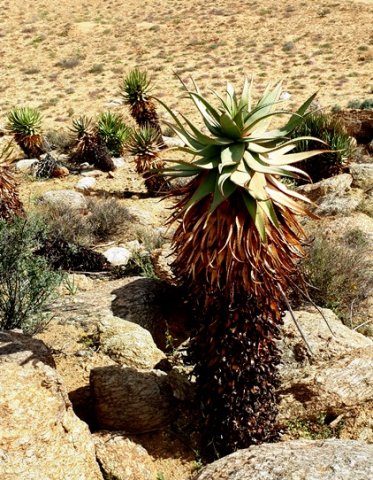Aloe microstigma audacious leaves

Author: Ivan Lätti
Photographer: Jack Lätti
When Aloe microstigma previously A. microstigma subsp. microstigma leaves curve down at their tips, the conventional growth pattern has been exceeded or violated. Daring behaviour may be frowned upon in staunch human society. Unconventional curves in Aloe World receive no reprimand. "Frowning" is here only caused by moisture loss or compressed skin in a curving body part.
Who knows the latent sensibilities that may lurk in the phylogenetic origins of a "psyche" in any neighbouring species, animal or plant? Safe to assume there can be no such thing? We are so rational, our scientific tradition so advanced... and yet!
When these leaves do not continue straight, angling up as is typical, the possibility of hybridisation should be considered. What partner might have contributed the other gene here in the Goegap veld near Springbok is unclear. A. microstigma is known to hybridise with both A. ferox and A. africana, the latter hybrid quite likely to produce leaves in the shape of an S-curve. But neither of these species occur anywhere near the Namaqualand Klipkoppe, restricted to the south and southeast of the country.
Better to remember that the general habit of A. microstigma in the Western Cape does include the occasional plant bearing leaf rosettes formed of S-curve leaves, their tips curving out; or a few such leaves per rosette. So, maybe this is just a “normal” A. microstigma with tired leaf tips acknowledging gravity (Frandsen, 2017; Vlok and Schutte-Vlok, 2015; Le Roux, et al, 2005; Van Wyk and Smith, 2003; Reynolds, 1974; Jeppe, 1969; iNaturalist).

